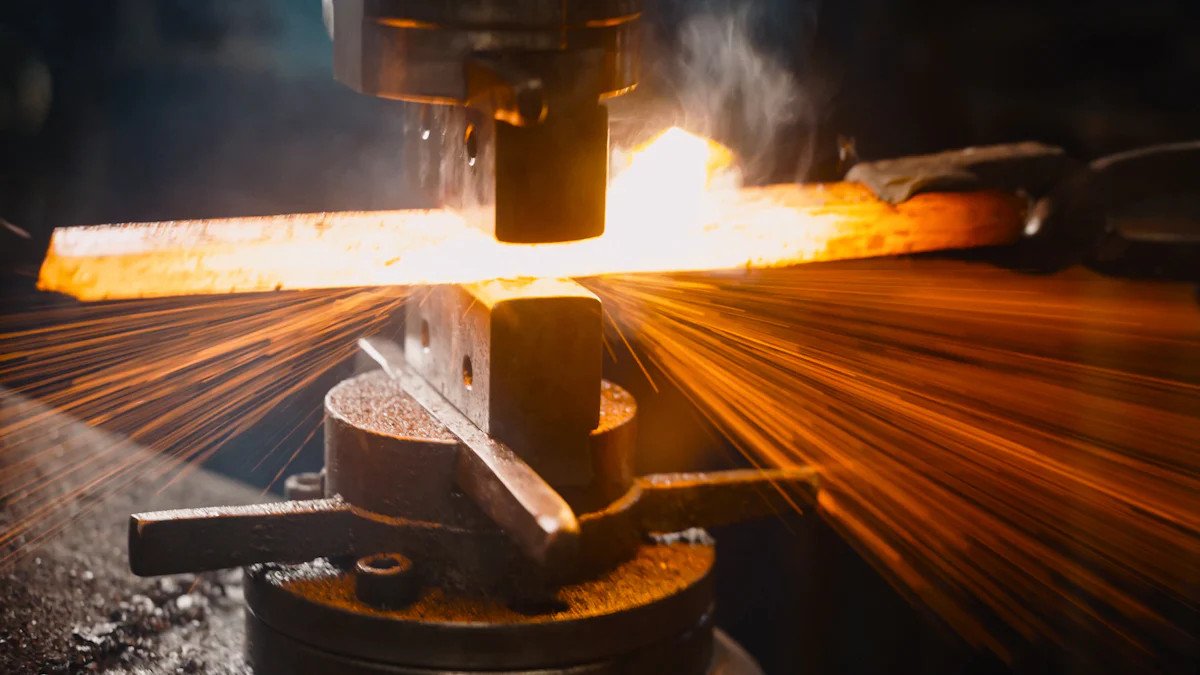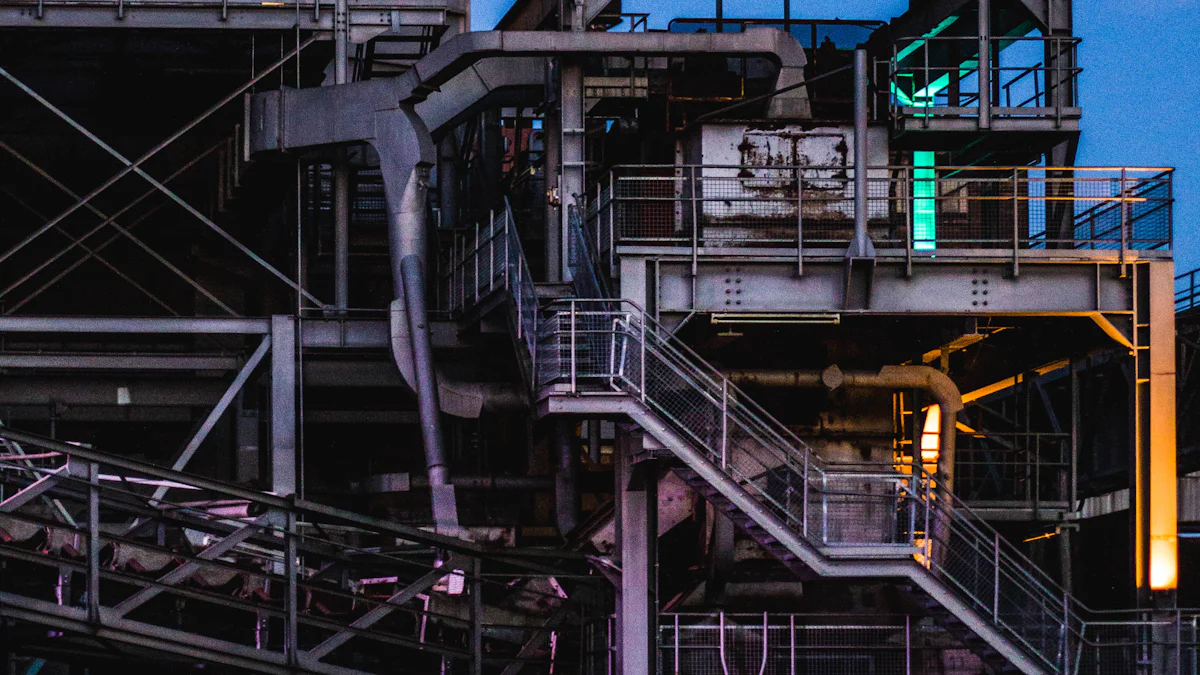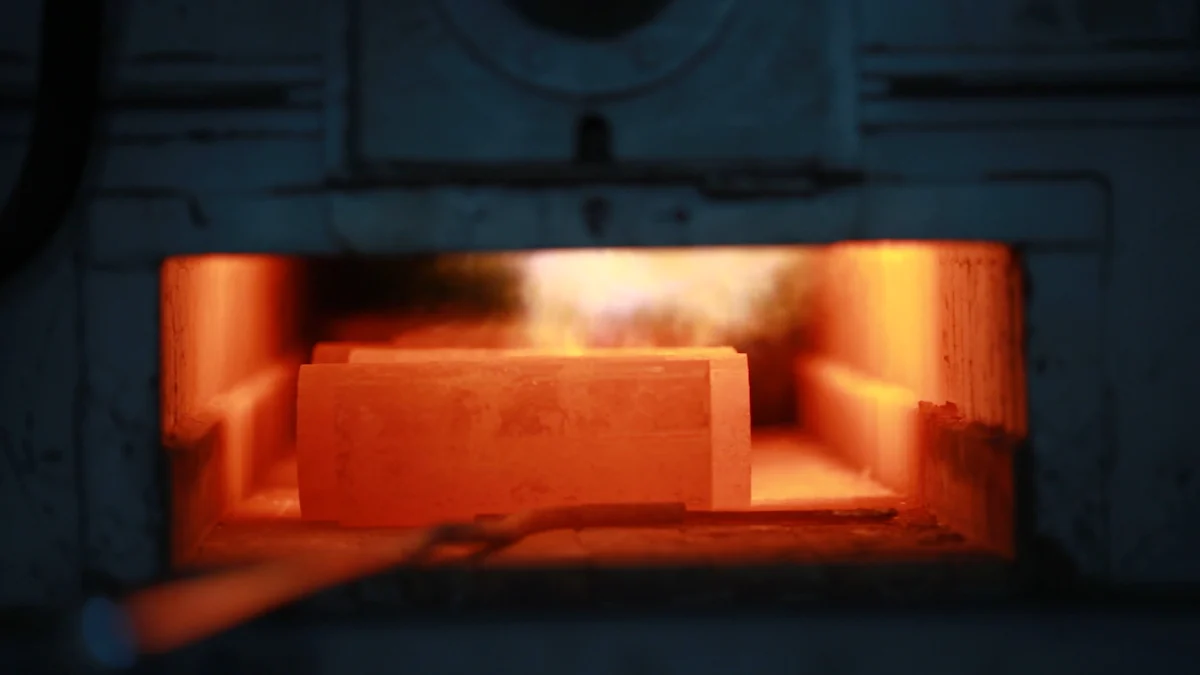
News

Induction forging transforms metal shaping by combining precision with sustainability. Industries like aerospace and automotive increasingly adopt this method for its energy efficiency and reduced waste. Unlike traditional furnaces, induction systems, including the advanced Induction Forging Machine, achieve up to 75% heat efficiency, saving 50-60% more energy. The global market for Electromagnetic Induction Equipment for forging is projected to reach $537.66 million by 2030.
Key Takeaways
Induction forging heats metals directly and uses energy better. It is 75% efficient and saves 50-60% more energy than old methods.
This method shapes metals with accuracy and keeps them consistent. It lowers mistakes and improves parts for planes and cars.
Using induction forging helps companies work faster and waste less. It also makes manufacturing more eco-friendly.
Understanding the Process of Induction Forging

What Is Induction Forging?
Induction forging is a modern technique that uses electromagnetic induction to heat metals before shaping them. This process relies on the principles of physics to generate heat efficiently. When you place a metal workpiece inside an induction coil, a high-frequency alternating current flows through the coil. This creates a magnetic field that induces eddy currents in the metal. These currents heat the metal due to its electrical resistance, making it malleable for forging.
Unlike traditional methods, induction forging is a non-contact process. The heat is generated directly within the metal, ensuring faster and more uniform heating. This precision makes induction forging ideal for industries requiring high-quality components.
How the Process of Induction Forging Works
The process of induction forging involves two main steps:
Heating the Metal Workpiece: The metal is placed inside an induction coil. The electromagnetic field heats the metal quickly and evenly, enhancing its malleability.
Forging the Metal Workpiece: Once heated, the metal is transferred to a forging press or hammer. Specialized tools shape the metal into the desired form.
This process ensures that the metal reaches the right temperature for shaping without wasting energy. You can achieve consistent results with minimal material waste.
Role of Induction Heating in Forging
Induction heating plays a crucial role in the process of induction forging. It allows you to control the temperature with exceptional precision. This ensures the metal is neither overheated nor underheated, which could compromise its quality. The uniform heating minimizes defects and enhances the structural integrity of the final product.
In industries like aerospace, induction heating helps create components with intricate designs, such as turbine blades. The precise control over heating patterns ensures these parts meet strict performance standards. By using induction heating, you can produce dimensionally accurate and high-quality forged parts efficiently.
Key Benefits of Induction Forging
Efficiency and Speed in Industrial Applications
Induction forging offers unmatched efficiency in industrial settings. You can heat metals rapidly and precisely, reducing the overall forging cycle time. This energy-efficient process ensures that you achieve higher production rates while meeting tight deadlines.
The quick heating technique allows you to complete each forging cycle faster.
You can boost output, enabling your business to handle large orders with ease.
Shorter lead times mean you can deliver products to market faster, giving you a competitive edge.
By adopting induction forging, you can streamline your operations and maximize productivity without compromising quality.
Precision and Consistency in Metal Shaping
Induction forging ensures exceptional precision in shaping metals. The process uses induction heating to control temperatures with accuracy, ensuring the metal is heated correctly for forging. This precision minimizes defects and enhances the consistency of your final products.
You can achieve dimensionally consistent forged parts due to precise heating patterns.
Localized heating reduces scale and oxidation, improving the surface quality of your components.
Shorter heating times ensure uniformity, even for intricate designs.
These advantages of induction forging make it ideal for industries like aerospace and automotive, where precision is critical.
Sustainability and Energy Savings
Induction forging is a sustainable and energy-efficient process. Its direct and focused heating minimizes heat loss, reducing energy consumption significantly compared to traditional methods.
You can save energy, especially when producing heavy machinery components.
Localized heating reduces material waste, as only the required areas are heated.
Improved material utilization lowers costs and minimizes excess machining.
By choosing induction forging, you contribute to a greener manufacturing process while enjoying cost savings and operational efficiency.
Industrial Applications of Canroon's Induction Forging

Automotive Industry: Gears, Shafts, and Other Components
Induction forging plays a vital role in the automotive industry by enabling the production of high-performance components. You can use this process to manufacture critical parts like crankshafts and connecting rods. These components benefit from enhanced durability and performance due to the precise control of temperature during forging.
This technology is also widely applied to create gears and shafts, ensuring they meet exact specifications. The fast and efficient heating provided by induction forging reduces production time while maintaining consistent quality. By adopting this method, you can produce automotive parts that withstand high stress and deliver reliable performance over time.
Aerospace Industry: Turbine Blades and High-Performance Parts
In the aerospace sector, induction forging is essential for creating components that endure extreme conditions. You can rely on this process to produce turbine blades, landing gear, and structural parts with exceptional precision. The precise control of temperature ensures that even complex designs, like turbine blades with intricate airfoil profiles, are forged accurately.
Induction heating allows you to achieve uniform heating, which enhances the structural integrity of aerospace components. This makes induction forging a preferred choice for manufacturing high-performance parts that meet stringent industry standards.
Energy Sector: Power Equipment and Infrastructure
The energy sector benefits significantly from the applications for induction forging. You can use this process to produce power equipment components with uniform heating and no oxidation layer. Induction forging minimizes material waste and reduces energy consumption by 50-60% compared to traditional methods.
By leveraging induction forging, you can create high-quality components while optimizing energy use and reducing costs.
Induction Forging vs. Traditional Forging Methods
Comparison of Heating Techniques
When comparing induction forging to traditional forging methods, the differences in heating techniques stand out. Traditional methods, such as gas or electric furnaces, rely on external heat sources to warm the metal. This approach often results in slower heating and uneven temperature distribution. In contrast, induction forging uses high-frequency electrical currents to generate heat directly within the metal.
Induction heating achieves forging temperatures much faster, boosting productivity.
Precise temperature control prevents overheating or underheating, ensuring the metal's integrity.
Heat is generated directly in the workpiece, reducing energy loss and improving efficiency.
These advantages make induction forging a superior choice for industries requiring speed and precision.
Advantages in Cost and Energy Efficiency
Switching to induction forging offers significant cost and energy savings. The direct heating process minimizes energy waste, lowering production costs. Additionally, localized heating reduces material waste, further enhancing cost efficiency.
By adopting induction forging, you can achieve a more sustainable and cost-effective manufacturing process.
Improved Quality and Reduced Waste
Induction forging ensures better material utilization by heating only the necessary areas of the workpiece. This localized heating minimizes excess material that would otherwise require machining or removal. As a result, you can reduce waste and improve the overall quality of your products.
Efficient heating also enhances the structural integrity of forged components. The precise control over temperature ensures uniform heating, reducing defects and improving consistency. These benefits contribute to a greener manufacturing process with a lower ecological footprint.
By choosing induction forging, you not only improve product quality but also contribute to sustainable industrial practices.
Induction forging has become a cornerstone of modern manufacturing, revolutionizing industries with its efficiency, precision, and sustainability. By adopting this technology, you can achieve enhanced productivity, cost-efficiency, and improved product quality. Industries like aerospace, automotive, and heavy machinery benefit from its versatility, producing high-performance components with minimal waste.
The Canroon Heat Treatment Induction Forging Machine exemplifies how advanced technologies are shaping the future. It enables the creation of turbine blades, crankshafts, and specialized tools while integrating intelligent control systems for real-time optimization. As the global market for induction forging grows, this process will continue driving innovation and efficiency, shaping not just metals but the future of industrial applications.
Embrace induction forging to stay ahead in a competitive and evolving industrial landscape.
FAQ
What makes induction forging more efficient than traditional methods?
Induction forging heats metals directly using electromagnetic currents. This process minimizes energy loss, reduces heating time, and ensures uniform temperature distribution for better efficiency.
Can Canroon's Heat Treatment Induction Forging Machine handle complex designs?
Yes, the machine's precise temperature control and uniform heating make it ideal for forging intricate components like turbine blades and gears with high accuracy.
Is induction forging environmentally friendly?
Absolutely! Induction forging reduces energy consumption by up to 60% and minimizes material waste, making it a sustainable choice for modern manufacturing.
Please give us a message